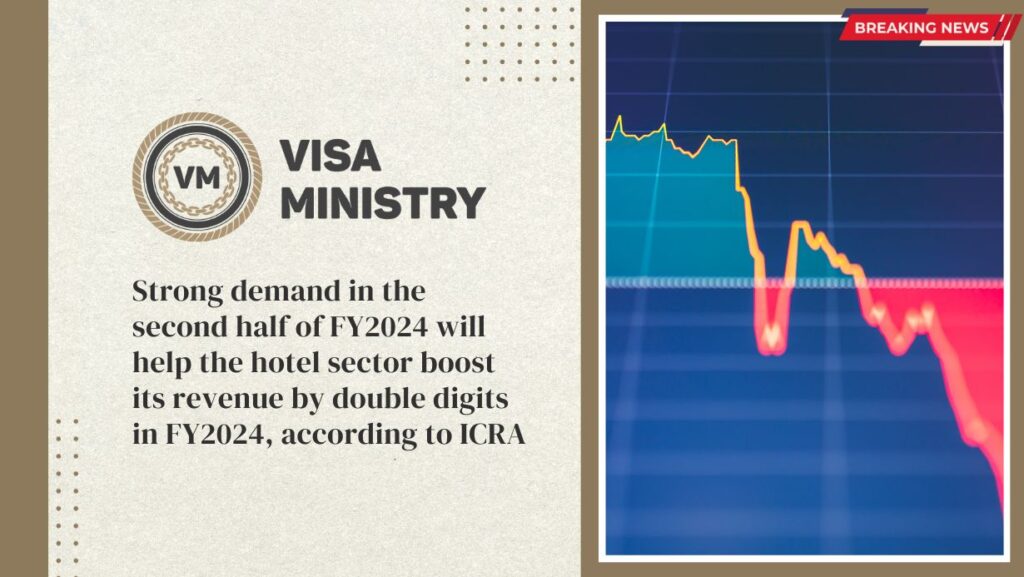ICRA anticipates double-digit revenue growth for the Indian hotel sector in FY2024, driven by the continuation of domestic leisure travel, the demand from MICE (meetings, incentives, conferences, and exhibits) and business travel, as well as a rise in foreign visitor arrivals (FTAs). The ongoing ICC World Cup 2023 and the G20 conference have also benefited the sector. After rebounding to 68–70% in FY2023, ICRA projects pan-India premium hotel occupancy at roughly 70–72% in FY2024. The average room rates (ARRs) of premium hotels across India are projected to be between Rs. 6,000 and Rs. 6,200 in FY2024.
Although occupancy is anticipated to reach decadal highs, the RevPAR is anticipated to be 20–25% below the peak of FY2008. The medium-term demand outlook is also positive, bolstered by a number of favorable factors such as favorable demographics, increased infrastructure and air connectivity, and the expected rise in large-scale MICE events following the opening of several new convention centers in recent years. Stronger ARRs would result from comparatively lower supply and healthy demand. Bigger players would also profit from hotel expansion-related revenues and profits through operating leases and management agreements.
Demand is anticipated to stay strong across markets in FY2024 as consumer sentiments remain positive and corporate performance is solid, according to Vinutaa S, vice president and sector head of corporate ratings at ICRA Limited. However, demand for a particular hotel would rely on factors like location, competition, and other dynamics specific to the facility. Additionally, domestic travel would be the main factor, even though FTA activity is probably going to increase in H2 FY2024. As gateway cities, Mumbai and Delhi are expected to post occupancy levels above 75% in FY2024, thanks to MICE events, business travelers, and transient passengers. Even though Pune and Bengaluru may trail behind other markets, they should see notable improvements in FY2024 over FY2023, notwithstanding this. In FY2024, the ARRs would see a healthy YoY increase, although they would still lag below the FY2008 peak. Demand for mid-scale hotels was also impacted by the steep increase in the ARRs of premium hotels.
The continuation of many of the cost-rationalization initiatives implemented during the Covid era, along with the advantages of operating leverage, has led to a notable increase in margins when compared to pre-Covid levels. The ratio of workers to rooms is still about 15–20% lower than it was before COVID-19. Businesses have been using more renewable energy, and their profit margins have also been supported by stringent cost management measures and cost pass-through. Larger hotel businesses have found that asset-light expansions increase their margins. Even if they are still far larger than pre-Covid levels, there may be some decrease in margins from the FY2023 levels as a result of hotels renovating and maintaining their facilities. Twelve sizable hotel enterprises that make up ICRA’s sample are anticipated to record operating margins of 25–28% for FY2024, compared to 20–22% prior to COVID and 28–30% for FY2023. Reducing the leverage on balance sheets has resulted in reduced interest expenses and can bolster net margins.
“ICRA anticipates that the improvement in cash flows and earnings will sustain the capital structure in the future. If there are any asset monetisations, they will mostly concern non-revenue producing assets. In FY2024, hotels’ debt indicators should be better than they were prior to the COVID-19 pandemic. However, the degree of improvement in return on capital employed (RoCE) would rely on the expansion strategy and, in the event of an asset-heavy expansion, could be limited by the high capital cost of additional properties due to rising land and construction costs. Numerous organizations have seen improvements in their credit profiles as a result of the robust business accruals. As a result, in FY2023 and YTD FY2024, upgrades have outpaced downgrades. Currently, 94% of ICRA’s ratings have a stable outlook, says Vinutaa.
In the last 12 to 15 months, there has been a solid increase in supply announcements and the start of delayed projects as a result of the boost in demand. On the other hand, supply would fall short of demand, growing at a CAGR of 3.5–4% over the medium term. Issues with land availability presently prevent supply expansion in upscale metropolises and larger cities’ micromarkets. Rebranding and property upgrades are the main reasons for the increase in the supply of premium hotels in these areas, and greenfield developments are mostly located in the suburbs. Significant supply announcements are observed at tier-II travel destinations for business, pleasure, and religion. In addition, compared to pre-Covid levels, the cost of building has increased by 20–25% per room due to cost inflation.
Source- Travel daily

